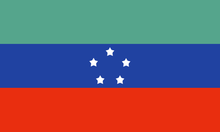Sidama people
The Sidama (Amharic: ሲዳማ) are an ethnic Cushitic people traditionally inhabiting the Sidama Zone of the Southern Nations, Nationalities, and Peoples Region (SNNPR) in Ethiopia. On 23 November 2019, the Sidama Zone became the 10th regional state in Ethiopia after a zone-wide referendum. They speak the Sidamo language, which is a language of the Cushitic branch of the Afroasiatic language family. Despite their large numbers, the Sidama lacked a separate ethnic regional state until continuous protests resulted in the proposal being voted on in a November 2019 referendum.[2]
| Total population | |
|---|---|
| 7.81 million (2007 census)[1] | |
| Regions with significant populations | |
| Ethiopia | |
| Languages | |
| Sidamu-Afo, | |
| Religion | |
| Protestant Christianity, Ethiopian Orthodox Tewahedo, Islam | |
| Related ethnic groups | |
| Oromo, Gurage, Welayta, Amhara, Somali, Afar, Tigrayans, Saho, other Cushitic peoples |
The Sidama preserved their cultural heritage, including their traditional religion and language until the late 1880s during the conquest by Emperor Menelik II.[3] Before this, the Sidama had their own well-established administrative systems that dated at least to the 9th century, though it was made up of a loose coalition of Sidama kingdoms. These kingdoms extended into the Gibe region. As a result of marginalization and since the language does not have its own alphabet, very little has been written on Sidama issues. Many were not able to attend school until after the Derg came to power in 1975.
Demographics
The Sidama people number 8.8 million (4.01% of the national population), of whom 149,480 are urban inhabitants, the fifth most populous ethnic group in Ethiopia.[4] Their language is called Sidaamu-afoo, which according to the 1994 national census was the mother language of 99.5% of them.[5] According to one authority, the majority of the Sidama practice their traditional beliefs, and only in the 1960s, when European missionaries came to their region, did any leave that faith.[3] However, according to the 1994 national census, only 14.9% practice traditional beliefs, while the majority (66.8%) are Protestant, 7.7% Muslim, 4.6% Catholic, and 2.3% practice Ethiopian Orthodox Christianity.[6]
Government and politics

Pan-Hornism
Over the course of the 20th century and into the 21st century, there have been increasing moves towards integration among Cushites, including in the amalgamation of language, cultural institutions and geopolitical frameworks[7], a move which has been dubbed by some analysts as pan-Horn development or pan-Hornism[8][9].
Sidama Region
Today, the Sidama area has a many number of schools, and adequate health services, though primary, secondary, preparatory and many colleges and university education has increased .[10] There is a Sidama administrative zone within Ethiopia's Southern Nations, Nationalities, and Peoples' Region. The Sidama Zone became its own regional state after a November 2019 referendum.
Economy
Nearly 90% of the Sidama live a life centered on agriculture. An important staple food is the wesse plant, or false banana. Other crops are also grown and cattle are often raised, with a strong cultural tradition surrounding their ownership. Perhaps the most important source of income is coffee, and "chat" or khat trees are also a major source of income. The Sidama area is a major contributor to coffee production, producing a high percentage of export coffee for the central government, second only to the Oromia region. The Sidama farmers have been affected by hunger caused by declining world market prices for coffee, despite supplying the popular coffee chain Starbucks with the majority of their coffee products from the region.
Religion and beliefs
Spirit possession occurs among the Sidama. The anthropologists Irene and John Hamer postulated that spirit possession is a form of compensation for being deprived within Sidama society.[11] The majority of the possessed are women whose spirits demand luxury goods to alleviate their condition, but men can be possessed as well. Possessed individuals of both sexes can become healers due to their condition. Hamer and Hamer (1966) suggest that this is a form of compensation among deprived men in the deeply competitive society of the Sidama, for if a man cannot gain prestige as an orator, warrior, or farmer, he may still gain prestige as a spirit healer. Women are sometimes accused of faking possession, but men never are.[11]
See also
- Sidama region
References
- "Census 2007", first draft, Table 5.
- Allen, Lovaise. The Politics of Ethnicity in Ethiopia. BRILL. p. 154. Retrieved 8 December 2016.
- S. Y. Hameso, Trevor Trueman, Temesgen M. Erena 1997
- "Census 2010", first draft, Table 5
- 1994 Population and Housing Census of Ethiopia: Results for Southern Nations, Nationalities and Peoples' Region, Vol. 2 Archived 2008-11-20 at the Wayback Machine, Table 2.16 (accessed 30 December 2008)
- 1994 Population and Housing Census of Ethiopia: Results for Southern Nations, Nationalities and Peoples' Region, Vol. 2, Table 2.20
- FALLON, PAUL D. "Language Development in Eritrea." Sustaining Linguistic Diversity: Endangered and Minority Languages and Language Varieties (2008): 145.
- University of Michigan (1987). Canadian Journal of African Studies: Le Journal Canadien Des Études Africaines.
conservative Arab countries (partly at the behest of the United States) put pressure on Somalia to forestall the growth of a pan-Horn
- Savà, Graziano, and Mauro Tosco. "La mort des langues en domaine chamito-sémitique." Faits de Langues 27.1 (2006): 279-290.
- "Primary education in Ethiopia" Archived 2011-07-13 at the Wayback Machine, Jimma Times
- Hamer, John and Irene Hamer. 1966. Spirit Possession and Its Socio-Psychological Implications among the Sidama Of Southwest Ethiopia. Ethnology 5 (4): 392-408.
External links
| Wikimedia Commons has media related to Sidama people. |